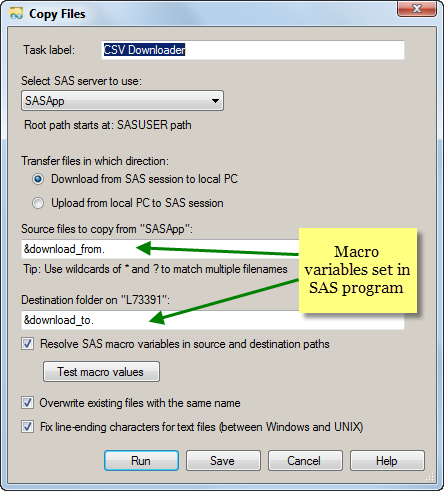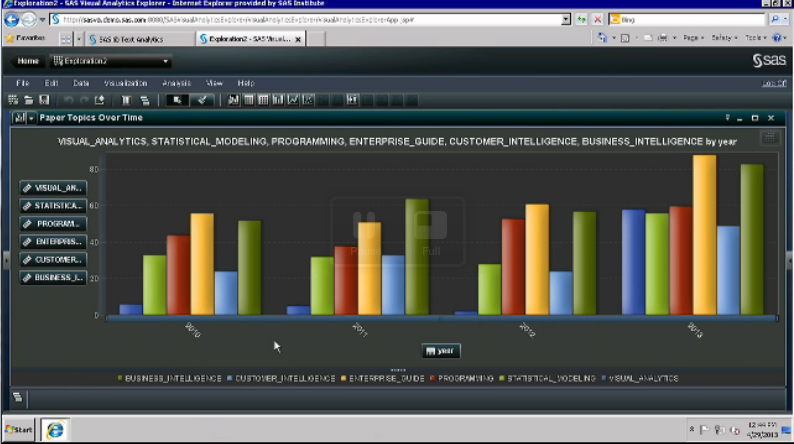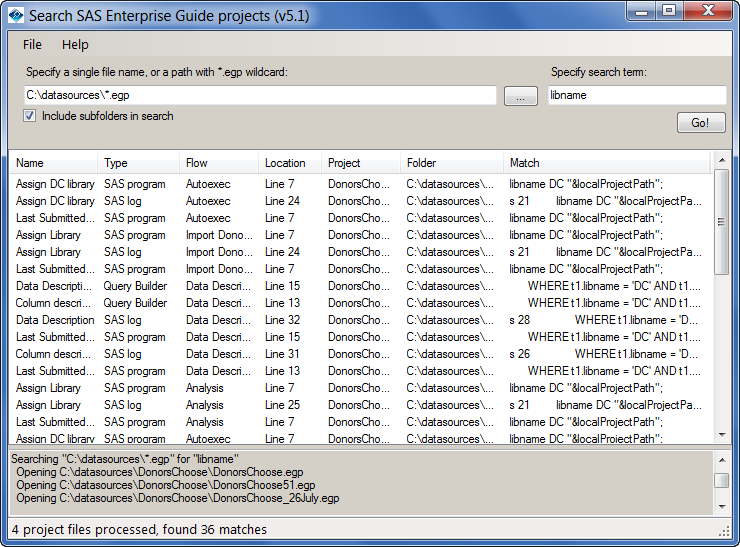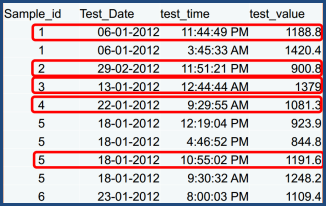
Last week I alluded to some very useful applications of the Copy Files task. This is one of them. If you have SAS Enterprise Guide 7.13 or later, the Copy Files task is in the Tasks->Data menu. In earlier versions, you'll have to download/install the task as a custom task.









